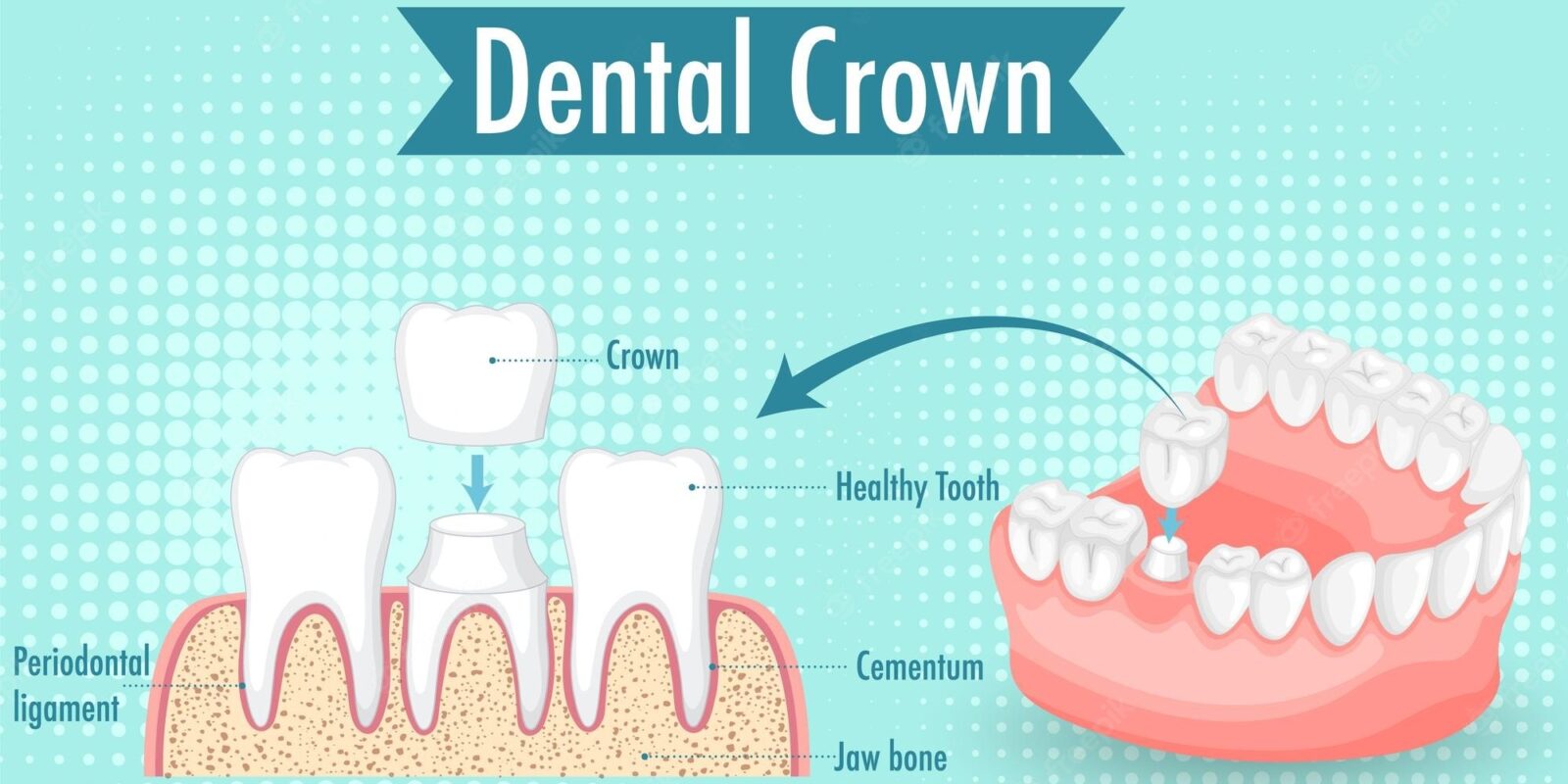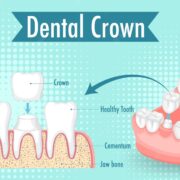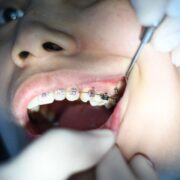In the field of dentistry, where artistic vision and accuracy are combined, crown cementation is a critical procedure that restores a patient’s smile’s appearance and functionality. A star in the field of dentistry, Dr. Chirag Chamria kindly walks us through the goal and methodology of crown cementation, a symphony of expertise and technique that elevates dental treatment to the level of an art.
Purpose of Crown Cementation Procedure
The purpose of crown cementation, a crucial step in the process of fixing a crown or bridge on the teeth, extends beyond the mere act of attachment. Crown cementation serves as the final, meticulous touch in the restoration process, providing stability, longevity, and aesthetic cohesion.
Let’s explore the multifaceted purposes of crown cementation:
Secure Attachment
The primary objective of crown cementation is to securely attach the crown or bridge to the prepared tooth or abutments. This ensures that the dental restoration remains firmly in place during everyday activities such as chewing and speaking, contributing to the patient’s confidence and comfort.
Stability and Durability
Crown cementation involves the use of dental adhesives or cement that form a strong bond between the crown and the tooth surface. This bond enhances the stability and durability of the restoration, promoting its ability to withstand the forces exerted during normal oral functions.
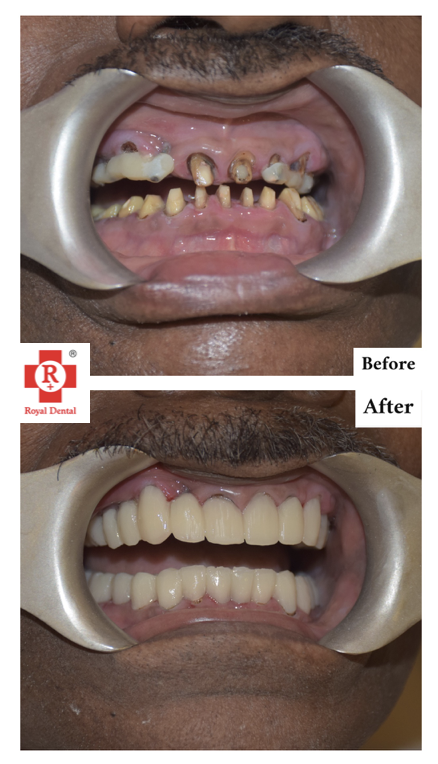
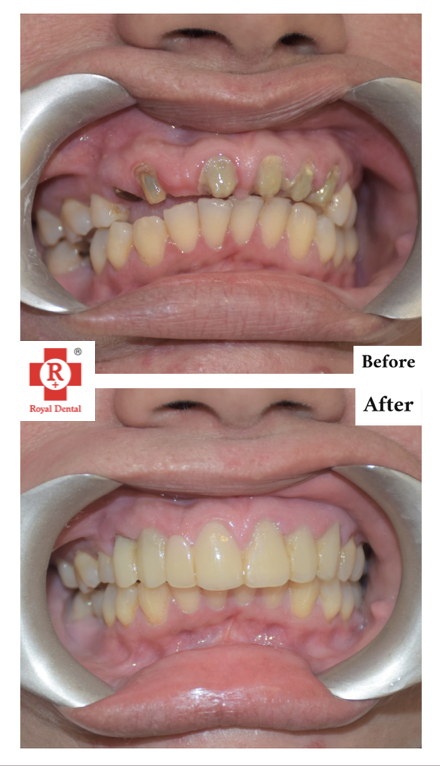
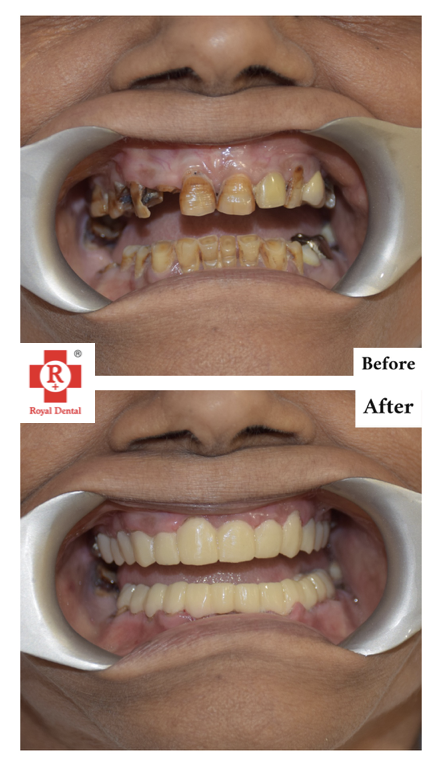
Protection of Prepared Tooth
Crown cementation acts as a protective barrier for the prepared tooth. By encapsulating the tooth with the crown, it shields the underlying structure from external factors, preventing further damage and decay. This is particularly crucial for teeth that have undergone significant dental work.
Aesthetic Integration
The manner in which the crown is cemented influences its aesthetic integration into the patient’s natural dentition. The careful application of cement ensures a seamless fit and color match, contributing to a visually cohesive and natural-looking smile.
Prevention of Microbial Ingress
Crown cementation creates a tight seal between the crown and the tooth, minimizing the risk of microbial ingress. This barrier helps prevent bacterial infiltration into the prepared tooth, reducing the likelihood of infections or complications that could compromise the overall success of the restoration.
Comfort for the Patient
A well-cemented crown contributes to the overall comfort of the patient. When the restoration is securely affixed, it minimizes the chances of sensitivity or discomfort, allowing the individual to enjoy a restored level of oral function without undue concerns.
Facilitation of Proper Occlusion
Crown cementation ensures that the crown or bridge is positioned correctly within the patient’s bite. This contributes to proper occlusion, enabling harmonious interactions between the upper and lower teeth during biting and chewing activities.
Adaptation to Oral Dynamics
The dental cement used during crown cementation is carefully chosen to adapt to the dynamic environment of the oral cavity. It accommodates factors such as moisture, temperature variations, and the forces exerted during mastication, ensuring the longevity of the dental restoration.
Patient Satisfaction and Confidence
Ultimately, crown cementation plays a pivotal role in enhancing patient satisfaction and confidence. A securely cemented crown not only functions optimally but also provides the patient with a natural-looking and aesthetically pleasing smile, fostering a positive impact on their overall well-being.
Setup of Crown Cementation Procedure
Diagnostic Phase
- Mirror: Allows for a clear view of the patient’s oral cavity, aiding in the examination of the tooth requiring crown cementation.
- Probe: Used to assess the integrity of the tooth structure, identify areas of decay, and measure the depth of the preparation.
- Tweezer: Facilitates the handling of small materials and instruments during the diagnostic phase.
- Spoon Excavator: Removes decayed or compromised tooth structure, preparing the tooth for the subsequent crown placement.
- Kidney Tray: Serves as a sterile container for holding and organizing the diagnostic instruments during the procedure.
- Gauze:: Used for moisture control and maintaining a dry field during tooth preparation.
- Cotton Holder: Holds cotton rolls or pellets for further moisture control and isolation.
- Waste Receiver: Provides a designated area for the disposal of used materials and instruments.

Resin Part
- Resin Polymer (Powder): The powder component of the resin is mixed with the liquid to create a durable and aesthetic resin restoration.
- Resin Monomer (Liquid): The liquid component of the resin combines with the powder to form a resin composite for crown construction.
- Spatula: Used for precise measurement and mixing of resin components to achieve the desired consistency.
- Brush: Facilitates the application of the resin material onto the tooth surface during crown construction.
- Dappen Dish: Holds and dispenses the resin monomer and polymer during the mixing process.
GIC Type 1
- GIC Type 1: Powder and Liquid: The two components are mixed to create a glass ionomer cement, which is used for crown cementation due to its adhesive properties.
- Mixing Pad: Provides a surface for the mixing of GIC components.
- Agate Spatula: Used for measuring and mixing the GIC components to achieve homogeneous consistency.
- Scoop: Facilitates the precise dispensing of GIC powder during the mixing process.
Conclusion
As we come to the end of our journey through the rationale and methodology of crown cementation, one is left in awe at the intricate relationship that exists between expertise, technology, and patient-centered care. With his skill, Dr. Chirag Chamria decodes the secret of this dental art form, showing it as more than just a process; rather, it’s a symphony that orchestrates the harmonic restoration of smiles.
Equipped with the knowledge that Dr. Chamria has imparted, patients set out on their own dental journeys and become not only beneficiaries but also active contributors to the creation of their radiant smiles—a testament to the magic that happens when science and compassion come together under the direction of a talented dentist.

